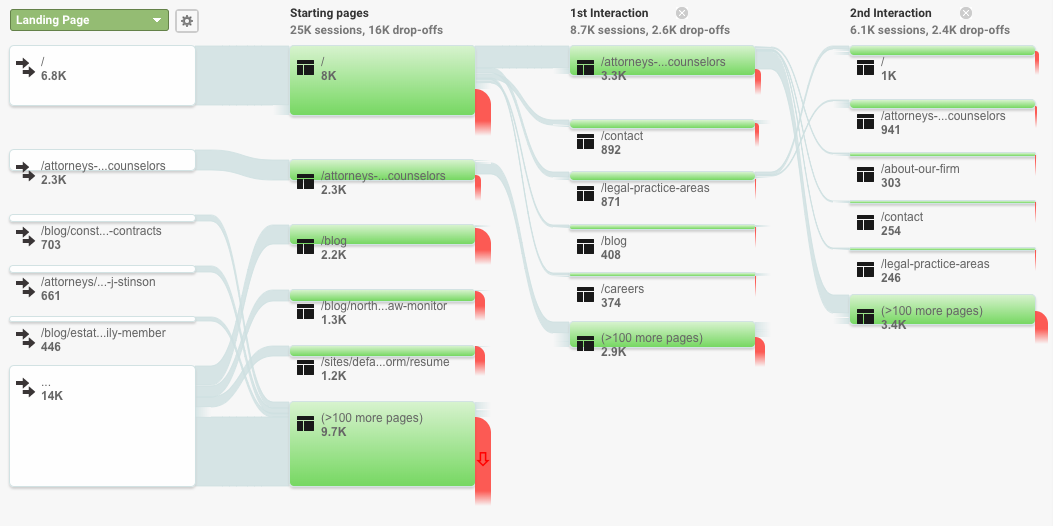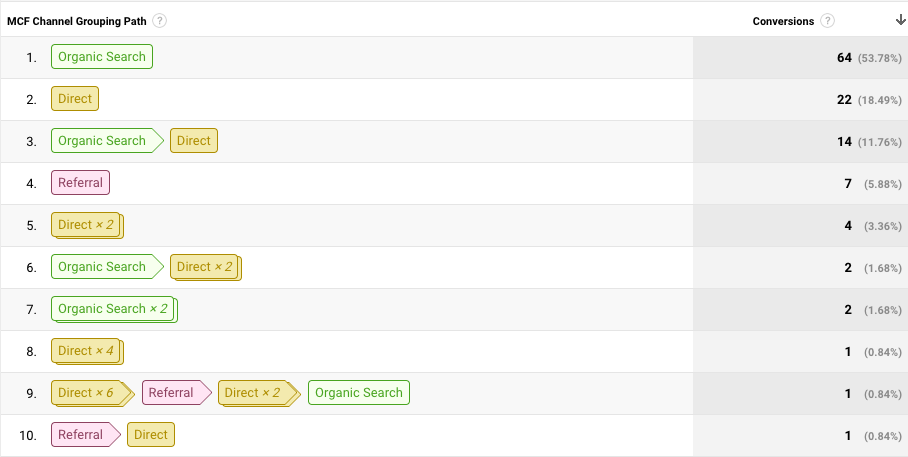It goes without saying that the web is an essential lead generation tool for law firms. However, not every firm is focused on keeping that tool sharp. Analytics platforms like Google Analytics continue to be a host of resources for conversion optimization in the legal space. Below are two not-so-common reports that can help elevate your efforts.
Assess Your Legal Marketing with a Behavior Flow Report
Landing pages are often seen as the cardinal indicator of website health from an SEO perspective. However, once a visitor lands on a page, what they do afterward can be just as telling. This is where the behavior flow report in Google Analytics becomes an important resource.
The behavior flow report is an extension of the standard flowchart, which typically consists of nodes representing pages or events users have seen/triggered, and their connections that tie them together. In aggregate, the behavior flow report is a representation of how users navigate through your site. The behavior flow report takes figures like bounce rate and average session duration to the next level by adding a chronological component.
The behavior flow report can give you insight into which pages perform better deeper into a user’s session. For example, your law blog may not serve well as a landing page, but may add to the impression that is established after a user sees your practice area page.

The average session duration in the standard reports can sometimes feel vague, as the time you’d expect for a user to stay on a site can vary with what kind of content they’re viewing. Behavior flow lists a counted number of users per interaction, including a count of drop-offs at each step and for the top trafficked pages. If you’re tracking events, it can be a useful tool for determining how long (in pages) it takes for visitors to convert.
Use Multi-Channel Funnels to Better Understand Your Law Firm Website Traffic
It’s no secret that potential clients will do a lot of research before making a decision to convert on your site. Prior research has shown that B2B clients use an average of six channels before making a decision to retain services. Multi-channel Funnels is a series of tools in Google Analytics that allow you to see how visits from different channels work together to lead to a conversion.
The MCF is a series of reports that contain information about how a website’s traffic channels (Organic, Direct, Paid, etc.) work in tandem to lead to a conversion. The Assisted Conversions report in particular can reveal which of your channels is most prevalent in providing the initial impression among converters and which channels returning users use to become a lead. The Top Conversion Paths report will give your firm an idea of how many visits it’s taking to secure a lead through your website.

Standard conversion reports only give an indication of the number of conversions in a given time window. In contrast, Multi-Channel Funnels give you access to a variable lookback window, revealing that some leads may have gotten their first impression on your site as soon as 90 days before actually converting.
If you’re curious about how Alloy uses tools for measurement, feel free to contact us.


